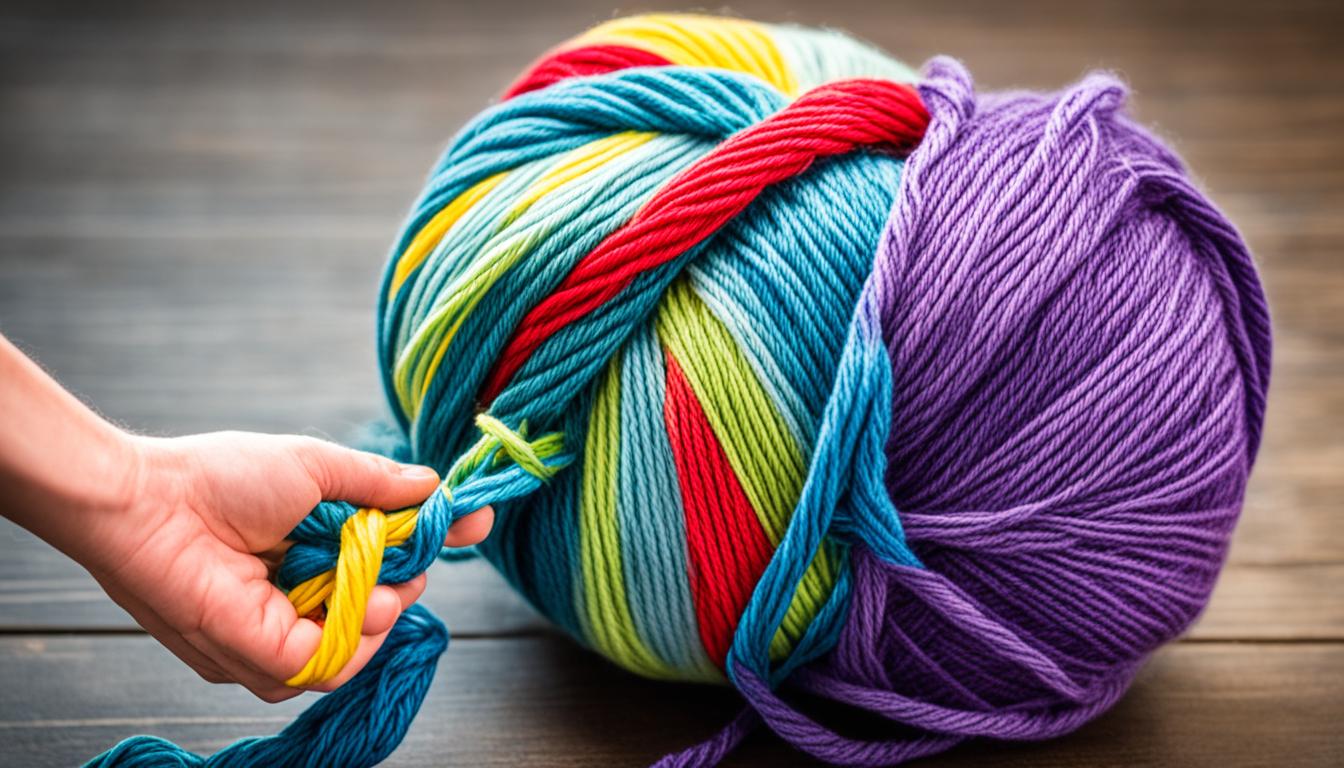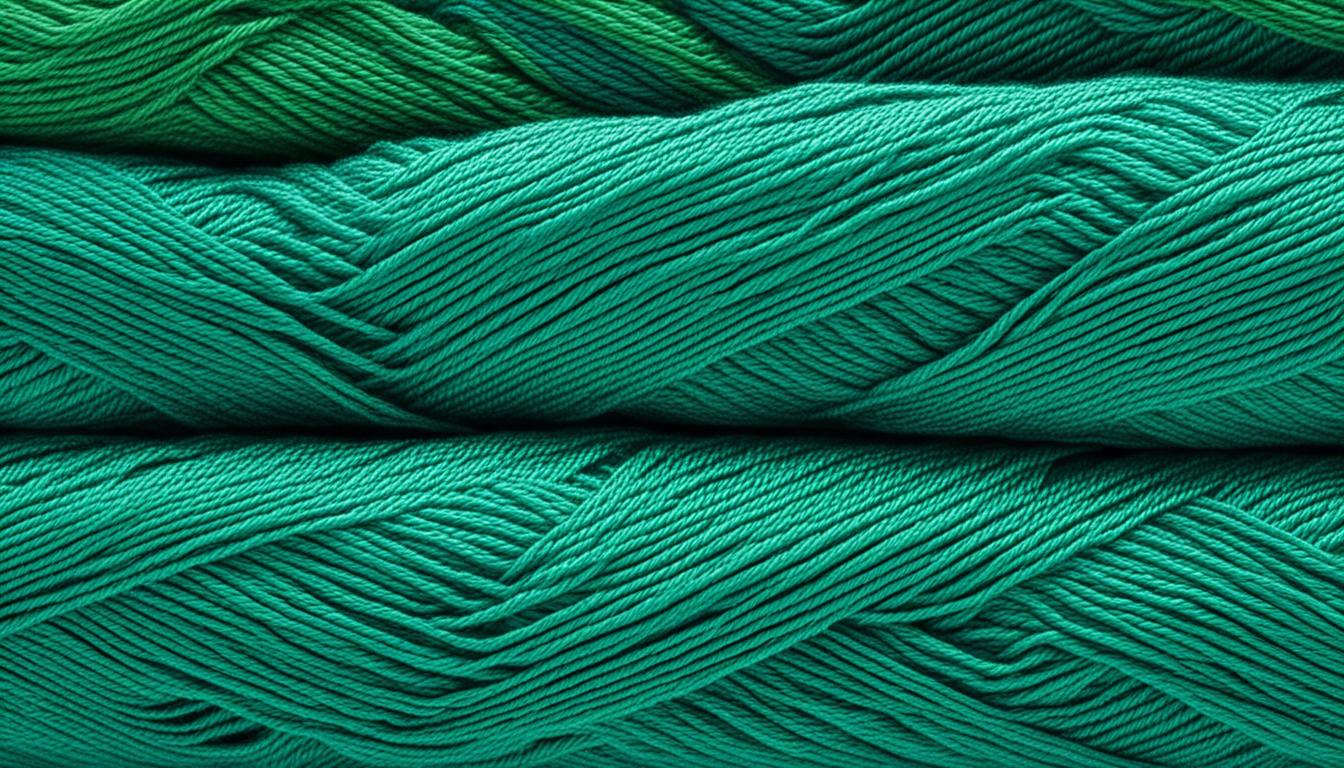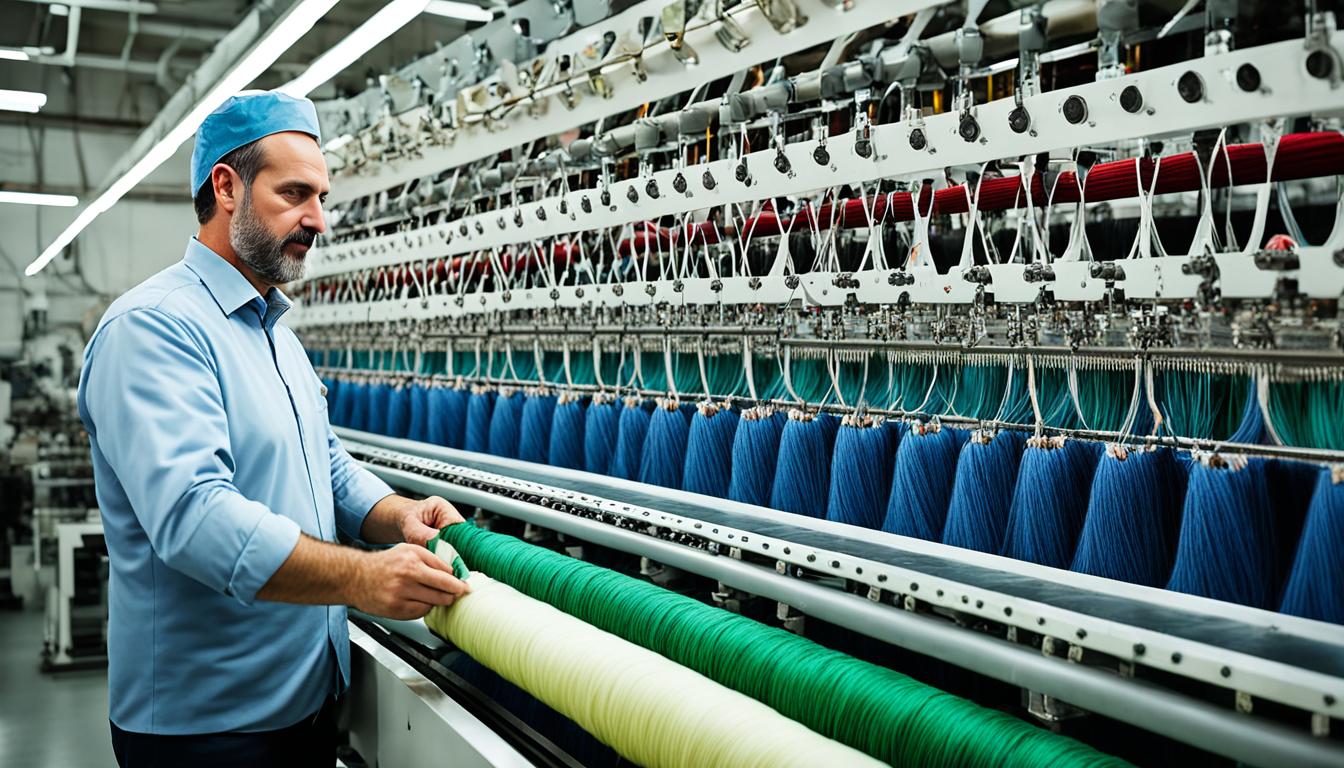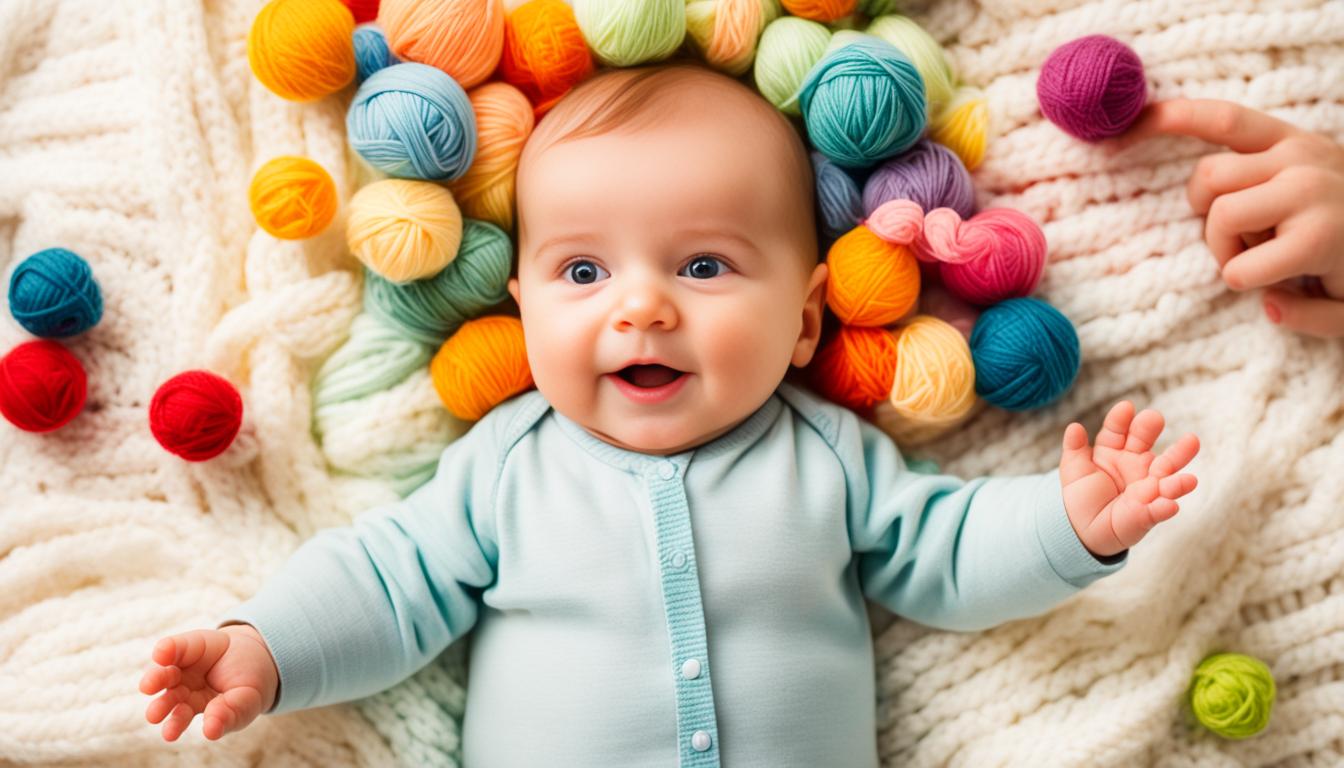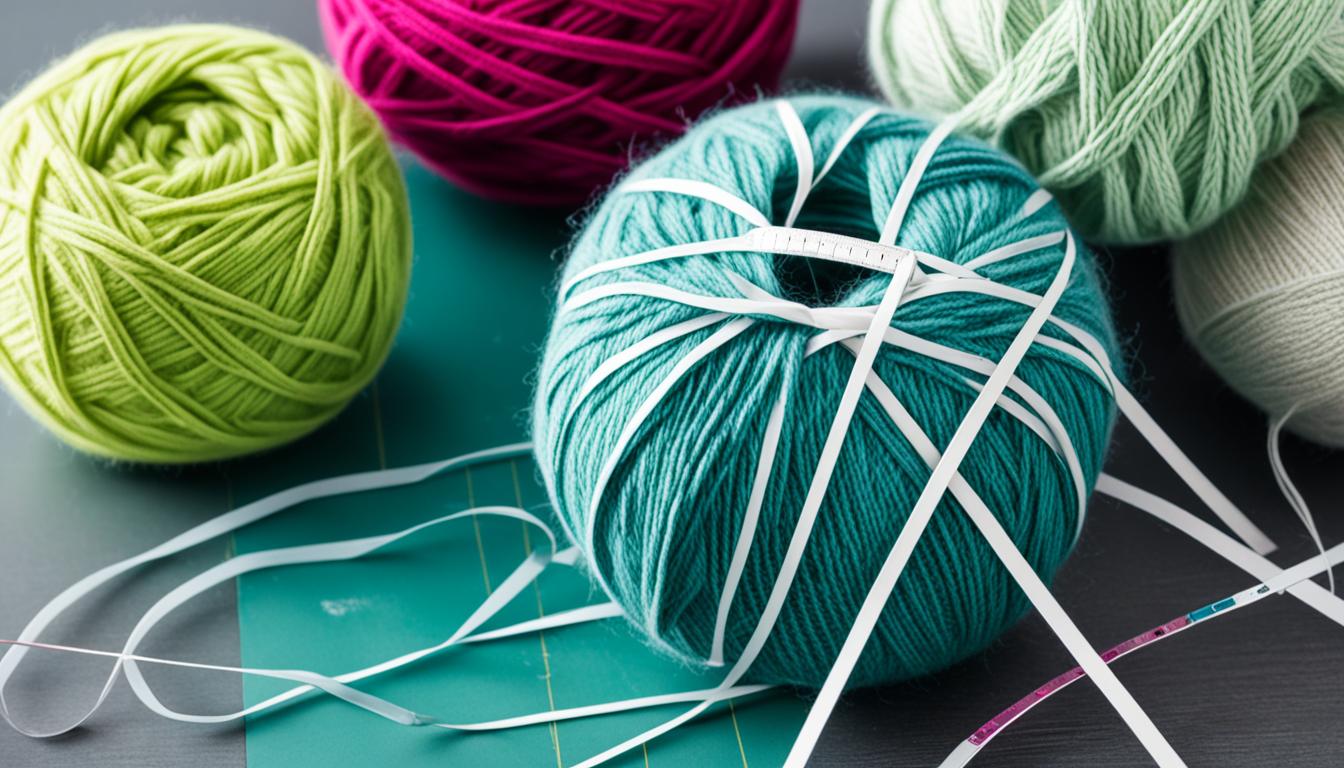Are you prepared to push your knitting abilities to the limit? Picture the excitement of finishing a project while always on the verge of running out of yarn. It’s time to tackle the challenge of Yarn Chicken! But what exactly is Yarn Chicken, and how can you emerge victorious in this thrilling knitting game?
In Yarn Chicken, crafters test their knitting prowess by attempting to finish a project without running out of yarn. The stakes are high, and it’s a game of nerves, calculation, and pure luck. But if you emerge victorious, the sense of accomplishment is unmatched.
So, are you ready to learn how to play Yarn Chicken and discover the strategies that seasoned knitters use to win this electrifying game? Let’s dive in and unravel the secrets of this enthralling challenge!
Key Takeaways:
- Yarn Chicken is a self-imposed knitting game where crafters aim to complete projects without running out of yarn.
- The term “Yarn Chicken” is commonly used in online knitting circles to describe this thrilling challenge.
- Players rely on intuition and instinct rather than precise measurements, adding an element of unpredictability to the game.
- Strategies for winning at Yarn Chicken vary, but knitting loosely or using a smaller needle size can help conserve yarn.
- Yarn Chicken has gained popularity in the knitting community as a way to push skills and experience the adrenaline rush of completing projects with just enough yarn.
How to Play Yarn Chicken
To play yarn chicken, we don’t bother with measuring or weighing the yarn to determine if there’s enough to complete the project. Instead, we rely on intuition and instinct. If you’re feeling confident, let’s dive right in and start knitting! The goal of this personal challenge is to finish the project without running out of yarn. There aren’t any strict rules; it’s a thrilling adventure where we test our knitting skills and luck.
As you embark on the yarn chicken journey, trust your instincts and gauge the yarn usage as you knit. Keep a close eye on your remaining yarn as you progress, estimating whether it will suffice. The excitement lies in the uncertainty of whether you have just enough yarn to cross the finish line or if you’ll find yourself in a nail-biting yarn shortage situation.
If you’re ready to take on the challenge, grab your knitting needles, select your favorite yarn, and let the game of yarn chicken begin!
Remember, there are no hard and fast rules to follow. Yarn chicken is a personal adventure, and how you approach it is entirely up to you. Trust your knitting skills, go with the flow, and enjoy the journey. Good luck!
The Thrill of Yarn Chicken
Playing yarn chicken can be an exhilarating experience for knitters. It injects a sense of adventure and unpredictability into the knitting process, making it an exciting knitting game. Some crafters enjoy the challenge of pushing their limits and testing their skills to see if they can complete a project without running out of yarn.
While there are no strict rules or strategies for winning at yarn chicken, some knitters have developed their own techniques and approaches. One strategy is to knit loosely, which helps conserve yarn and increases the chances of completing the project with what they have. Another tactic is to use a smaller needle size, as it requires less yarn per stitch, allowing knitters to stretch their yarn further.
The thrill of yarn chicken lies in the suspenseful moments when we’re approaching the end of our yarn, wondering if we’ll make it or end up unraveling everything and starting again. It’s like a game of chance, where the outcome is uncertain until the very last stitch. The excitement and satisfaction of successfully playing yarn chicken make it a favorite challenge among knitters.
Of course, not all knitters enjoy the thrill of yarn chicken. For those who prefer to avoid the stress and uncertainty, buying extra yarn is a common practice. By having a surplus of yarn, crafters can work on their projects with peace of mind, knowing they have more than enough to complete them.
Ultimately, the decision to play yarn chicken or opt for extra yarn is a personal preference. Some knitters find joy in the risk-taking aspect of the game, while others prefer the reassurance of having extra yarn readily available. Whichever approach we choose, the most important thing is to enjoy the process and the creativity that comes with knitting.
The Excitement of the Yarn Chicken Game
Excitement is an integral part of the yarn chicken knitting game. It adds a sense of adventure and challenge to the traditional knitting process, making it thrilling and unpredictable. Although some prefer to avoid the stress and buy extra yarn to guarantee success, many knitters enjoy the adrenaline rush of playing yarn chicken. Strategies for winning at the game may differ, but some crafters choose to knit loosely or use a smaller needle size to conserve yarn.
| Pros of Playing Yarn Chicken | Cons of Playing Yarn Chicken |
|---|---|
|
|
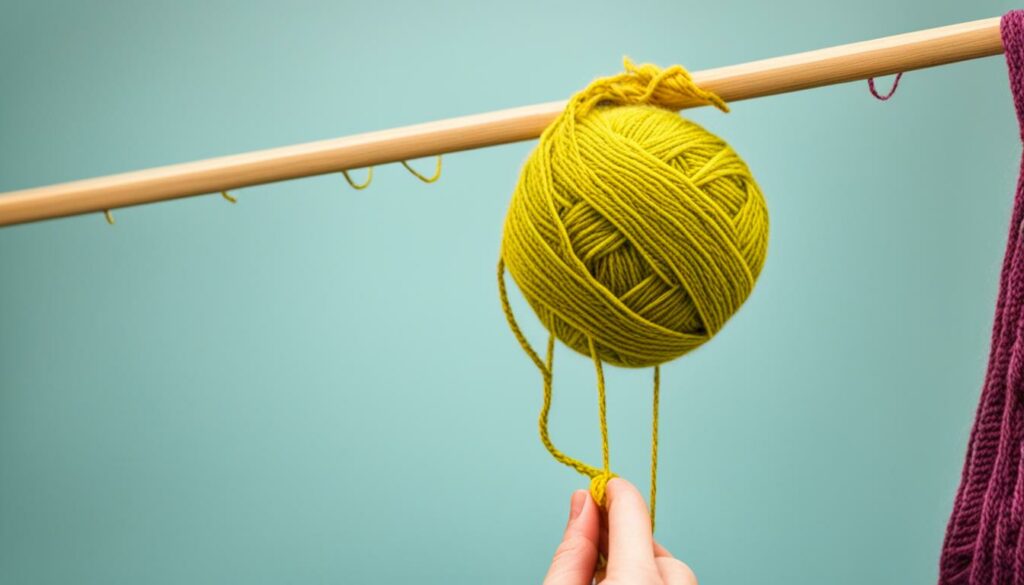
The Origins of Yarn Chicken
The term “yarn chicken” has its roots in the world of online knitting and crochet communities. It is a playful and descriptive way to refer to the challenge of completing a knitting project without running out of yarn. This concept has gained popularity among crafters as an exciting and engaging knitting game.
Originating from online knitting circles, the term “yarn chicken” captures the thrill and anticipation of playing this unique game. Knitters who participate in yarn chicken eagerly test their skills and luck, hoping to achieve victory by finishing a project with just enough yarn to spare.
The popularity of yarn chicken can be attributed to its interactive nature and the sense of adventure it brings to the knitting process. Crafters are drawn to the excitement of working on a project while teetering on the edge of potentially running out of yarn. The challenge lies in finding the perfect balance between yarn consumption and project completion.
Knitting Communities and Yarn Chicken
In the vibrant online knitting community, yarn chicken has become a topic of discussion, camaraderie, and friendly competition. Crafters share their yarn chicken experiences, swap tips and strategies, and cheer each other on as they tackle challenging projects. It has created a sense of community and bonding among knitters who revel in the joys and triumphs of playing yarn chicken.
Playing yarn chicken is not just about completing a project; it’s about the journey, the thrill, and the shared experiences with fellow knitters. We have all experienced the adrenaline rush and the satisfaction of finishing a project with just a few inches of yarn remaining.
As the knitting community continues to grow and evolve, so does the fascination with yarn chicken. Knitters embrace this unconventional knitting challenge as a way to test their skills, explore creative problem-solving, and add an element of daring to their craft.
The Joy of Yarn Chicken
The joy of playing yarn chicken lies in its unpredictability and the lessons it teaches. Knitters often discover innovative ways to conserve yarn or take calculated risks to achieve their desired outcome. The game fosters a sense of curiosity and pushes crafters to think outside the box, resulting in unique and breathtaking creations.
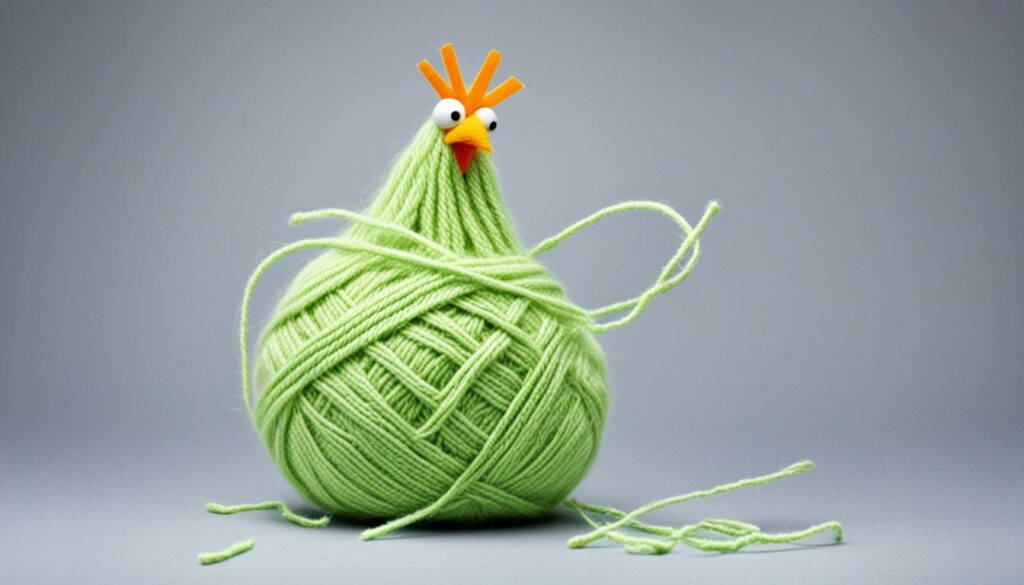
| Advantages of Yarn Chicken | Disadvantages of Yarn Chicken |
|---|---|
| Feeling of excitement and thrill | Potential risk of running out of yarn |
| Opportunity for creative problem-solving | Possibility of project delays or interruptions |
| Satisfaction of successfully finishing with just enough yarn | Chance of having to rework or modify the project if more yarn is required |
Yarn Chicken Stories and Experiences
As knitters, we all have our own yarn chicken stories and experiences. It’s a journey filled with excitement, suspense, and sometimes a bit of disappointment. The thrill of playing yarn chicken is like no other, whether you’re left with just a few inches of yarn to spare or find yourself running out before completing your project. These stories serve as reminders of the risks we take and the lessons we learn along the way.
“I remember the time I played yarn chicken on a baby blanket. It was a close call, but I managed to finish the final row with only a few strands of yarn left. My heart was racing, and I felt a sense of accomplishment like never before.”
These experiences are not just about the outcome but the journey itself. The adrenaline rush when you realize you’re nearing the end of your yarn and the satisfaction when you push through and conquer the challenge. It’s a game of skill, intuition, and trust in your abilities as a knitter.
Lessons Learned from Yarn Chicken
Playing yarn chicken teaches us valuable lessons about planning, resource management, and problem-solving. It highlights the importance of estimating yarn requirements before starting a project and being mindful of our stash. We learn to make decisions on the fly and adapt to unforeseen circumstances. These experiences shape us as knitters and empower us to take risks and embrace challenges.
Additionally, yarn chicken stories often become bonding moments among knitters. We share our triumphs and near misses, offering support and encouragement to those who have faced similar situations. It’s a testament to the camaraderie within the knitting community and the shared passion for this craft.

Whether your yarn chicken experiences have left you with a masterpiece or a valuable lesson, they add a unique dimension to our knitting journeys. So, let’s celebrate these stories, learn from them, and continue to embrace the thrill of playing yarn chicken.
Tips for Winning at Yarn Chicken
While there are no foolproof strategies for winning at yarn chicken, there are some tips that may increase your chances of success.
1. Start with a larger amount of yarn than you think you need: To ensure you have enough yarn to finish your project, it’s best to err on the side of caution. Begin with a generous amount of yarn and add to it if necessary. This eliminates the risk of running out and losing the game of yarn chicken.
2. Knit a small swatch beforehand: Before diving into your project, knit a small sample swatch using the same yarn and needles you plan to use. Measure how much yarn you used per inch of knitting and calculate how much you will need for the entire project. This estimation will give you a rough idea of the yarn required for your project, helping you avoid any surprise shortages.
3. Consider yarn conservation techniques: To stretch your yarn even further, consider employing some yarn conservation strategies. Knitting loosely and using a smaller needle size can help conserve yarn and give you a better chance of winning at yarn chicken.
Remember, winning at yarn chicken is all about careful planning, estimation, and taking calculated risks. While there’s always an element of unpredictability, these tips can tilt the odds in your favor.
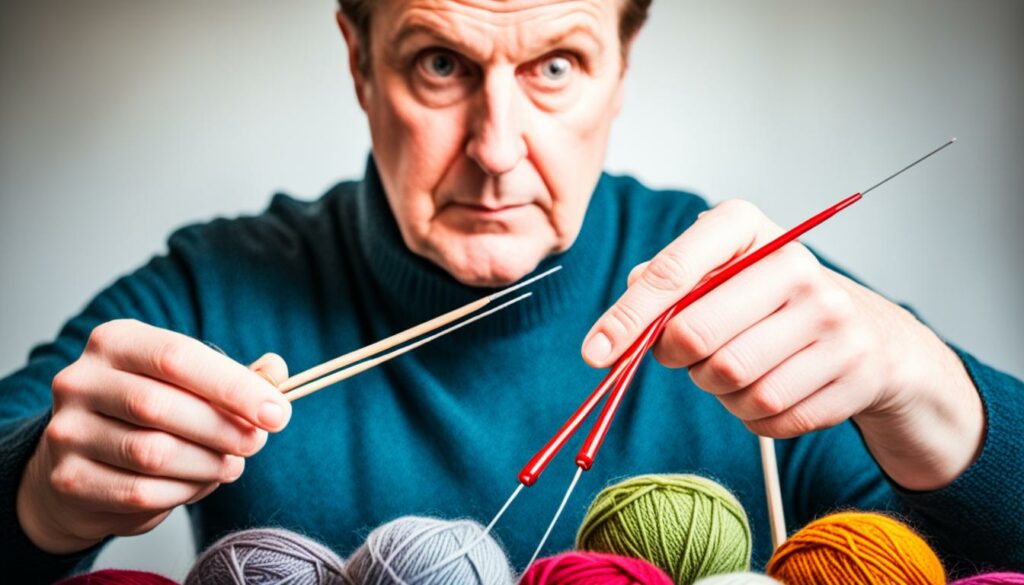
| Tip | Yarn Chicken Strategy |
|---|---|
| 1 | Start with a larger amount of yarn than you think you need |
| 2 | Knit a small swatch beforehand to estimate yarn usage |
| 3 | Consider yarn conservation techniques such as knitting loosely |
Yarn Chicken and Project Planning
Proper project planning is key to avoiding the nerve-wracking game of yarn chicken. When crafters fail to calculate their yarn requirements accurately before starting a project, they often find themselves in a race against time and yarn. To prevent this stress and uncertainty, we recommend taking the time to plan and estimate the amount of yarn needed for each project.
One reliable approach to project planning is measuring and weighing the yarn beforehand. By determining the weight and length of the yarn you have available, you can calculate how much will be needed for your desired project. This ensures that you have enough yarn to complete your masterpiece without teetering on the brink of “yarn chicken” territory.
Estimating Yarn Requirements
Estimating yarn requirements may seem daunting, but with a few handy tips and tricks, you can become a pro at predicting how much yarn your project will need. Here are some steps to help you get started:
- Refer to the pattern: Check the yarn requirements mentioned in the knitting or crochet pattern you’re using. Patterns often specify the estimated amount of yarn needed based on the project’s size or dimensions.
- Consider stitch patterns: Keep in mind that different stitch patterns use different amounts of yarn. Intricate or textured stitches may require more yarn compared to simpler stitches.
- Factor in the yarn weight: The weight of the yarn also impacts the amount needed. Lighter weight yarns typically require less yarn compared to heavier weights for the same project.
- Account for swatching: Swatching is an essential step in yarn estimation. By knitting a small sample square using your chosen stitch pattern, you can determine the amount of yarn used per inch. Multiply this by the total length or width of your project to get an estimate.
Incorporating these estimation techniques into your project planning process will help you avoid the yarn chicken dilemma and ensure a smooth and enjoyable knitting experience.
| Project Type | Yarn Requirements |
|---|---|
| Sweater | Approximately 1000-2000 yards of yarn |
| Scarf | Approximately 200-500 yards of yarn |
| Beanie | Approximately 100-200 yards of yarn |
Remember, project planning and calculating yarn requirements may take a little extra time upfront, but it pays off in the long run. By ensuring you have enough yarn for your project, you can confidently embark on your knitting journey, leaving the yarn chicken game behind.
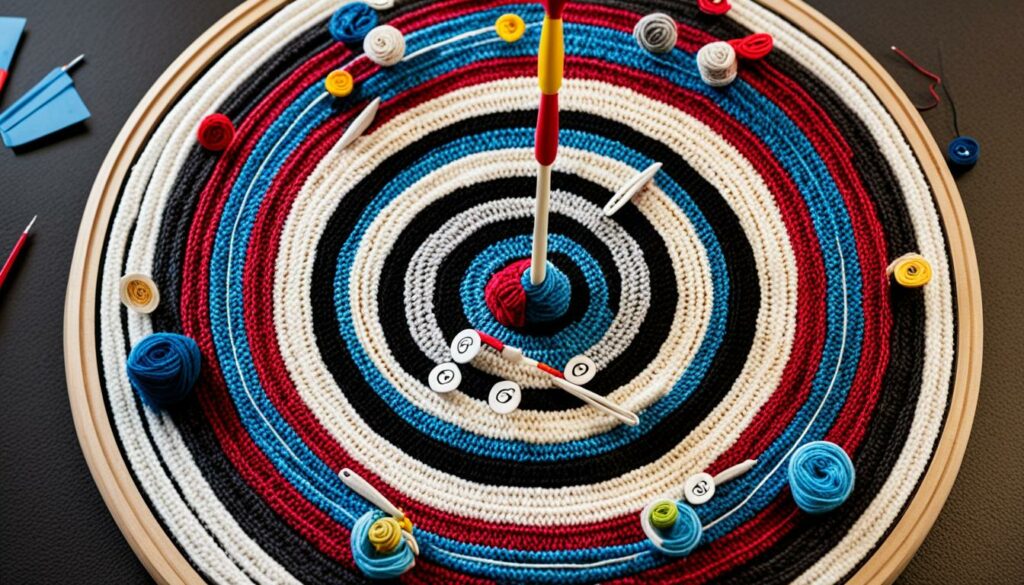
Yarn Chicken and Stash Management
Yarn chicken, the thrilling knitting game, can sometimes be attributed to a lack of proper yarn stash management. If we constantly buy new yarn without using up what we already have, we may find ourselves running out of yarn unexpectedly. It is important to be mindful of our yarn stash and use it efficiently to avoid playing yarn chicken unnecessarily.
One strategy for managing our yarn stash is to regularly assess what we already have and plan our projects accordingly. By knowing what yarn we have in our stash, we can choose projects that match our available yarn and minimize the chances of running out. This approach allows us to make the most of the yarn we already own and save money in the process.
Additionally, when planning our projects, it can be beneficial to estimate the amount of yarn needed accurately. Taking the time to calculate the yarn requirements based on pattern recommendations, swatching, or using online resources can help us determine the right amount of yarn to purchase. This proactive approach eliminates the guesswork and reduces the likelihood of encountering a yarn chicken situation.
Managing our yarn stash also involves buying extra yarn strategically. By purchasing additional skeins of yarn for our projects, we can ensure that we have enough yarn to complete the entire project comfortably. This eliminates the stress and uncertainty of potentially running out of yarn mid-project. It’s always better to have more yarn than we need rather than fall short and risk disrupting the flow of our knitting.
“I’ve learned the importance of managing my yarn stash over the years. By organizing my yarn, regularly assessing what I already have, and purchasing extra yarn strategically, I’ve significantly reduced the instances of playing yarn chicken. It’s a game I’d rather not play unless I’m intentionally pushing my yarn limits!” – Alicia, avid knitter
Proactively managing our yarn stash not only helps us avoid yarn chicken situations but also allows us to make better use of our resources and become more efficient knitters. By being mindful of our stash, accurately estimating yarn requirements, and buying extra yarn strategically, we can enjoy smoother and stress-free knitting experiences.

Yarn Chicken in the Knitting Community
The excitement and thrill of yarn chicken have made it a popular topic of discussion and bonding within the knitting community. Knitters from all over come together in online knitting circles and forums to share their experiences, offer advice, and support each other through the challenges of playing yarn chicken.
In these virtual knitting communities, you can find a diverse range of stories and anecdotes about yarn chicken, each one highlighting the unique experiences and strategies employed by crafters. Whether it’s the exhilaration of finishing a project with just enough yarn to spare or the disappointment of running out before reaching the end, knitters come together to celebrate the triumphs and learn from the setbacks.
“Playing yarn chicken is like a rollercoaster ride of emotions. The suspense, the uncertainty, and the thrill of pushing your limits—it’s what keeps us coming back for more.” – Knitting Enthusiast
Knitting communities foster a sense of camaraderie, making it easier to navigate the challenges of yarn chicken. Crafters provide invaluable tips and tricks, sharing their strategies for conserving yarn and maximizing the chances of successfully completing projects.
Through these online knitting circles, you can find guidance on selecting the right needle size, adjusting tension, or incorporating alternate stitch patterns to make your yarn go further. These shared experiences and insights empower knitters of all skill levels to embrace the excitement and take on the yarn chicken challenge with confidence.
Knit and Connect
Joining an online knitting circle not only offers a platform to discuss and explore yarn chicken but also allows you to connect with like-minded individuals who share your passion for knitting. Collaborate on projects, swap patterns, and learn new techniques while building lasting friendships within the knitting community.
So, if you’re curious about yarn chicken or looking for support and inspiration from fellow knitters, dive into the online knitting circles and immerse yourself in the world of yarn chicken. It’s a journey filled with laughter, learning, and the joy of creating something beautiful, one stitch at a time.
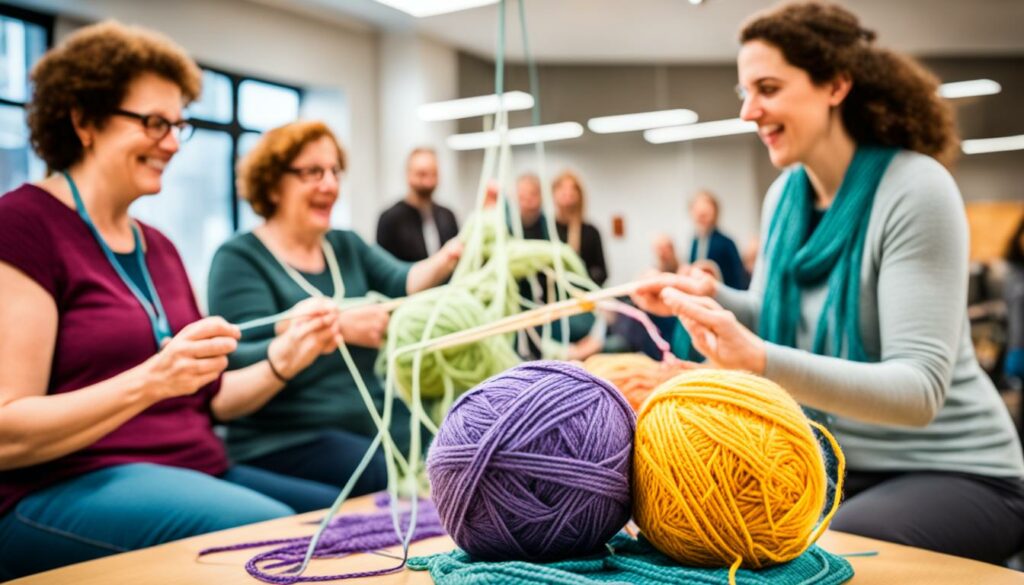
| Benefits of Joining Online Knitting Circles | Why Participate in Yarn Chicken Discussions |
|---|---|
| Opportunity to connect with fellow knitters | Learn from the experiences of others |
| Get inspiration for new projects | Share your own yarn chicken stories |
| Exchange knitting tips and tricks | Receive support and advice |
| Discover new patterns and techniques | Feel a sense of belonging to a community |
Yarn Chicken as a Knitting Challenge
Yarn chicken is not just a game; it’s a knitting challenge that pushes us to test our skills and unleash our creativity. It adds an element of excitement and risk-taking to the craft, allowing us to think outside the box and problem-solve as we work towards completing a project with just enough yarn. For those who enjoy the thrill of yarn chicken, it can be a fun and rewarding challenge.
“There is something uniquely thrilling about playing yarn chicken. It forces us to think creatively and find innovative solutions to complete our projects. It’s like a puzzle that we piece together with every stitch, and the satisfaction of winning the game is incredibly rewarding.” – Jane, avid knitter
Pushing the Boundaries of Knitting
When we take on the yarn chicken challenge, we’re not just following a pattern or creating a standard project. We’re pushing the boundaries of knitting, exploring what’s possible with the limited amount of yarn we have. It’s an opportunity to experiment with different techniques, stitch patterns, and even yarn weights to maximize every inch of yarn.
Embracing the Risk
Yarn chicken is not for the faint of heart. It requires us to embrace the risk of potentially running out of yarn before the project is complete. This risk-taking mentality forces us to stay engaged and invested in every stitch, making each one count towards our ultimate goal. It ignites a sense of determination and resourcefulness that can be both challenging and deeply satisfying.
Although the yarn chicken challenge can be nerve-wracking, it’s important to remember that it’s just a game. If we do run out of yarn, it’s an opportunity to learn from our mistakes, adapt, and try again. After all, knitting is about the journey as much as the destination.
The Yarn Chicken Adventure
Embarking on a yarn chicken adventure means stepping into the unknown. It requires us to trust our instincts, make quick decisions, and improvise when necessary. The thrill of not knowing whether we’ll have enough yarn to finish keeps us engaged and invested in the process, transforming a simple knitting project into a thrilling saga.
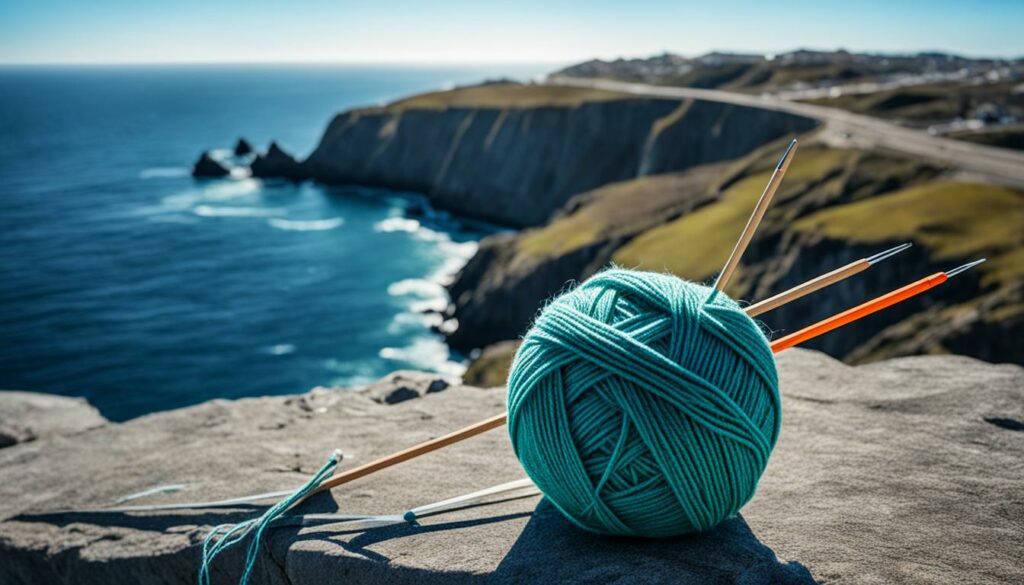
Reflecting on the Challenge
Completing a project through the yarn chicken challenge not only gives us a sense of accomplishment but also helps us grow as knitters. It pushes our boundaries, expands our skills, and encourages us to think outside the box. The lessons learned from playing yarn chicken can be carried over to future projects, making us more resourceful and adaptable in our knitting endeavors.
| Benefits of Yarn Chicken as a Knitting Challenge | Challenges of Yarn Chicken as a Knitting Challenge |
|---|---|
| 1. Fuels creativity and innovation | 1. Possibility of running out of yarn |
| 2. Enhances problem-solving skills | 2. Requires quick decision-making |
| 3. Provides a sense of accomplishment | 3. Can be stressful for some knitters |
| 4. Expands knitting repertoire | 4. May result in unfinished projects |
Playing yarn chicken challenges us to think on our feet, embrace risk, and discover new ways to approach our craft. It injects a sense of excitement and adventure into our knitting routine, making each project a unique and memorable experience.
Conclusion
Yarn chicken is a playful knitting game that challenges crafters to complete projects without running out of yarn. It adds excitement and unpredictability to the knitting process, and many knitters enjoy the thrill of playing yarn chicken.
While there are no strict rules or strategies for winning at yarn chicken, careful planning and estimating yarn requirements can increase your chances of success. By measuring and weighing the yarn beforehand, you can ensure that you have enough to complete your project without the stress of potentially running out.
Whether you embrace the challenge of yarn chicken or prefer to buy extra yarn to avoid the game altogether, the joy of knitting is in the journey. So, let’s celebrate the creativity and camaraderie that yarn chicken brings to the knitting community. Have fun playing the yarn chicken game and embrace the adventure!
